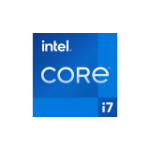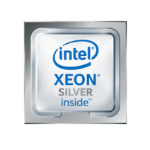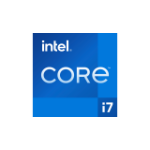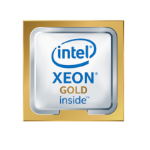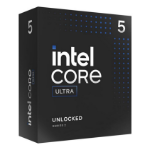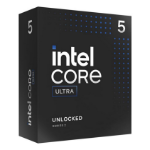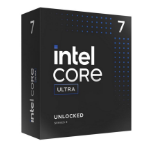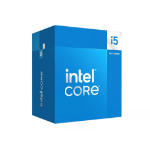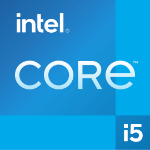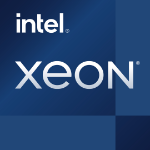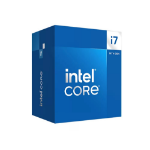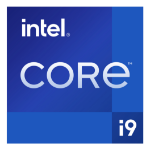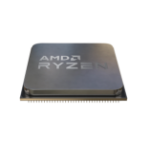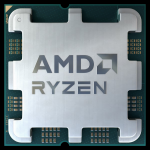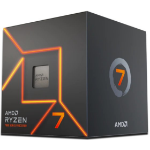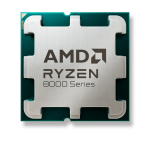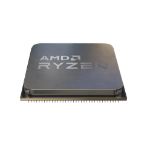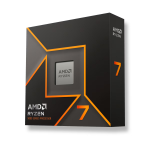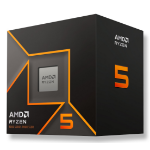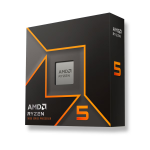AMD Ryzen 5 8600G processor 4.3 GHz 16 MB L3
£236.40
£197.00
Socket AM5, 6 cores, 12 threads, 4.3 GHz base clock, 5 GHz boost clock, 16 MB cache, 65 W
More Information
| Processor socket | Socket AM5 |
|---|---|
| Box | No |
| Processor cores | 6 |
| Processor family | AMD Ryzen 5 |
| SKU | 100-000001237 |
| EAN | 5054444571607 |
| Manufacturer | AMD |
| Availability | Y |
| Product Family | Ryzen |
| Product Series | 5 |
Specifications
| Processor | |
|---|---|
| Processor generation | AMD Ryzen 8000 Series |
| Processor base frequency | 4.3 GHz |
| Processor manufacturer | AMD |
| Cooler included | No |
| Configurable TDP-down | 45 W |
| Thermal Design Power (TDP) | 65 W |
| Processor cache | 16 MB |
| Processor model | 8600G |
| Processor threads | 12 |
| Processor boost frequency | 5 GHz |
| Processor lithography | 4 nm |
| Processor family | AMD Ryzen™ 5 |
| Processor cores | 6 |
| Box | No |
| Processor socket | Socket AM5 |
| Configurable TDP-up | 65 W |
| Processor cache type | L3 |
| Memory | |
| Memory types supported by processor | DDR5-SDRAM |
| Memory clock speeds supported by processor | 3600,5200 MHz |
| Memory channels | Dual-channel |
| Graphics | |
| Discrete graphics card | No |
| On-board graphics card model | AMD Radeon 760M |
| On-board graphics card | Yes |
| On-board graphics card base frequency | 2800 MHz |
| Discrete graphics card model | Not available |
| Power | |
|---|---|
| Configurable TDP-down | 45 W |
| Thermal Design Power (TDP) | 65 W |
| Technical details | |
| PCI Express slots version | 4.0 |
| Compatible operating systems | Windows 11/10 x64, RHEL x86 64-bit, Ubuntu x86 64-bit |
| Thermal Design Power (TDP) | 65 W |
| Market segment | Desktop |
| Configurable TDP-up | 65 W |
| Processor cache type | L3 |
| Features | |
| Thermal Design Power (TDP) | 65 W |
| PCI Express slots version | 4.0 |
| Compatible operating systems | Windows 11/10 x64, RHEL x86 64-bit, Ubuntu x86 64-bit |
| Market segment | Desktop |
| Processor special features | |
| Configurable TDP-up | 65 W |
Delivery Details
- UK distributors.
- Order before 4 pm for next-day delivery.
- Standard (2-3 days) £7.50
- Next Day £9.99
- Free standard delivery over £100
There are deivery surcharges to these postcodes:
| Postcode | Charge |
| IV3-40 | £20 |
| IV52-54 | £20 |
| IV63 | £20 |
| KW1-14 | £20 |
| PA10-40 | £20 |
| PH19-40 | £20 |
| PH50 | £20 |
| HS | £50 |
| IV41-51 | £50 |
| IV55-56 | £50 |
| KA27-28 | £50 |
| KW15-17 | £50 |
| PA41-49 | £50 |
| PA60-62 | £50 |
| PA76-78 | £50 |
| PH41-44 | £50 |
| ZE | £50 |
| IM | £50 |
| JE | £50 |
| GY | £50 |
| TR21-25 | £50 |
| BT | £20 |
Suggested Products
Intel Core i5-9500T processor 2.2 GHz 9 MB Smart C...
Shop NowIntel Core i7-13700K processor 30 MB Smart Cache B...
Shop NowIntel Core i7-12700F processor 25 MB Smart Cache B...
Shop NowHPE Intel Xeon-Silver 4214R processor 2.4 GHz 16 M...
Shop NowHPE Intel Xeon-Gold 5222 processor 3.8 GHz 16.5 MB...
Shop NowIntel Core Ultra 5 245K processor 24 MB Smart Cach...
Shop NowIntel Core Ultra 5 245KF processor 24 MB Smart Cac...
Shop NowIntel Core Ultra 5 225F processor 20 MB Smart Cach...
Shop NowIntel Core Ultra 5 225 processor 20 MB Smart Cache...
Shop NowIntel Core Ultra 7 265K processor 30 MB Smart Cach...
Shop NowIntel Core Ultra 7 265KF processor 30 MB Smart Cac...
Shop NowIntel Core Ultra 7 265 processor 30 MB Smart Cache...
Shop NowIntel Core i5-14500 processor 24 MB Smart Cache Bo...
Shop NowIntel Core Ultra 7 265F processor 30 MB Smart Cach...
Shop NowHPE Intel Xeon-Silver 4214R processor 2.4 GHz 16.5...
Shop NowIntel Core i7-13700 processor 30 MB Smart Cache Bo...
Shop NowIntel Core i5-14600K processor 24 MB Smart Cache B...
Shop NowIntel Core i7-12700 processor 25 MB Smart Cache
Shop NowIntel Core i7-9700 processor 3 GHz 12 MB Smart Cac...
Shop NowIntel Core i5-9500TE processor 2.2 GHz 9 MB
Shop NowIntel Core i5-12600K processor 20 MB Smart Cache
Shop NowIntel Xeon E-2324G processor 3.1 GHz 8 MB Smart Ca...
Shop NowIntel Core i7-14700KF processor 33 MB Smart Cache ...
Shop NowIntel Core i7-14700F processor 33 MB Smart Cache B...
Shop NowIntel Core i5-14600KF processor 24 MB Smart Cache ...
Shop NowIntel Xeon W-2223 processor 3.6 GHz 8.25 MB
Shop NowIntel Core i7-12700KF processor 25 MB Smart Cache ...
Shop NowIntel Core i7-12700 processor 25 MB Smart Cache Bo...
Shop NowIntel Core i7-14700 processor 33 MB Smart Cache Bo...
Shop NowIntel Xeon 4208 processor 2.1 GHz 11 MB
Shop NowIntel Core i9-12900K processor 30 MB Smart Cache B...
Shop NowIntel Core i9-12900KF processor 30 MB Smart Cache ...
Shop NowIntel Core i7-14700K processor 33 MB Smart Cache B...
Shop NowAMD Ryzen 7 8700G processor 4.2 GHz 16 MB L3
Shop NowAMD Ryzen 9 5900XT processor 3.3 GHz 72 MB L2 & L3...
Shop NowAMD Ryzen 7 5700X processor 3.4 GHz 32 MB L2 & L3
Shop NowAMD Ryzen 7 7800X3D processor 4.2 GHz 96 MB L3
Shop NowAMD Ryzen 7 7700 processor 3.8 GHz 32 MB L3
Shop NowAMD Ryzen 7 7700 processor 3.8 GHz 32 MB L2 & L3 B...
Shop NowAMD Ryzen 7 8700F processor 4.1 GHz 16 MB L3 Box
Shop NowAMD Ryzen 7 9700X processor 3.8 GHz 40 MB L2 & L3
Shop NowAMD Ryzen 9 7900X processor 4.7 GHz 64 MB L3 Box
Shop NowAMD Ryzen 9 5950X processor 3.4 GHz 64 MB L3 Box
Shop NowAMD Ryzen 9 7900 processor 3.7 GHz 64 MB L3 Box
Shop NowAMD Ryzen 7 8700G processor 4.2 GHz 16 MB L3 Box
Shop NowAMD Ryzen 7 5700X3D processor 3 GHz 96 MB L3 Box
Shop NowAMD Ryzen 7 7700X processor 4.5 GHz 32 MB L3 Box
Shop NowAMD Ryzen 7 9700X processor 3.8 GHz 40 MB L2 & L3 ...
Shop NowAMD Ryzen 5 9600 processor 3.8 GHz 32 MB L3 Box
Shop NowAMD Ryzen 5 9600 processor 3.8 GHz 32 MB L3 Box
Shop NowAMD Ryzen 5 7600 processor 3.8 GHz 32 MB L3 Box
Shop NowAMD Ryzen 5 7600X processor 4.7 GHz 32 MB L3
Shop NowAMD Ryzen 5 5600X processor 3.7 GHz 32 MB L3
Shop NowAMD Ryzen 5 9600X processor 3.9 GHz 38 MB L2 & L3 ...
Shop NowYou may also be interested in
| Product |
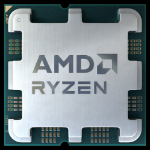
Bestseller
AMD Ryzen 5 8600G processor 4.3 GHz 16...
£236.40
£197.00
|
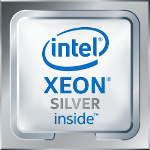 Intel Xeon 4208 processor 2.1 GHz 11 MB
Intel Xeon 4208 processor 2.1 GHz 11 MB
£274.32
£228.60
|
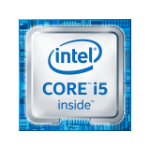 Intel Core i5-9500T processor 2.2 GHz...
Intel Core i5-9500T processor 2.2 GHz...
£240.14
£200.12
|
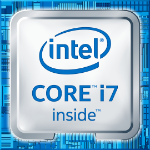
Recommended
Intel Core i7-9700 processor 3 GHz 12...
£318.49
£265.41
|
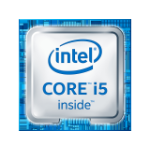
New
Intel Core i5-9500TE processor 2.2 GHz...
£318.61
£265.51
|
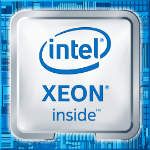
Popular
Intel Xeon W-2223 processor 3.6 GHz 8....
£350.40
£292.00
|
|---|---|---|---|---|---|---|
| SKU |
100-000001237
|
CD8069503956401
|
CM8068403362510
|
CM8068403874521
|
CM8068404404726
|
CD8069504394701
|
| Description |
No
|
Intel® Trusted Execution Technology
Intel® Trusted Execution Technology for safer computing is a versatile set of hardware extensions to Intel® processors and chipsets that enhance the digital office platform with security capabilities such as measured launch and protected execution. It enables an environment where applications can run within their own space, protected from all other software on the system. Intel® Virtualization Technology for Directed I/O (VT-d) Intel® Virtualization Technology for Directed I/O (VT-d) continues from the existing support for IA-32 (VT-x) and Itanium® processor (VT-i) virtualization adding new support for I/O-device virtualization. Intel VT-d can help end users improve security and reliability of the systems and also improve performance of I/O devices in virtualized environments. Intel® Virtualization Technology (VT-x) Intel® Virtualization Technology (VT-x) allows one hardware platform to function as multiple “virtual” platforms. It offers improved manageability by limiting downtime and maintaining productivity by isolating computing activities into separate partitions. Intel® 64 Intel® 64 architecture delivers 64-bit computing on server, workstation, desktop and mobile platforms when combined with supporting software.¹ Intel 64 architecture improves performance by allowing systems to address more than 4 GB of both virtual and physical memory. Cache CPU Cache is an area of fast memory located on the processor. Intel® Smart Cache refers to the architecture that allows all cores to dynamically share access to the last level cache. Intel® AES New Instructions Intel® AES New Instructions (Intel® AES-NI) are a set of instructions that enable fast and secure data encryption and decryption. AES-NI are valuable for a wide range of cryptographic applications, for example: applications that perform bulk encryption/decryption, authentication, random number generation, and authenticated encryption. Intel® Turbo Boost Technology Intel® Turbo Boost Technology dynamically increases the processor's frequency as needed by taking advantage of thermal and power headroom to give you a burst of speed when you need it, and increased energy efficiency when you don’t. Max Turbo Frequency Max Turbo Frequency is the maximum single-core frequency at which the processor is capable of operating using Intel® Turbo Boost Technology and, if present, Intel® Turbo Boost Max Technology 3.0 and Intel® Thermal Velocity Boost. Frequency is typically measured in gigahertz (GHz), or billion cycles per second. Execute Disable Bit Execute Disable Bit is a hardware-based security feature that can reduce exposure to viruses and malicious-code attacks and prevent harmful software from executing and propagating on the server or network. Intel® Hyper-Threading Technology Intel® Hyper-Threading Technology (Intel® HT Technology) delivers two processing threads per physical core. Highly threaded applications can get more work done in parallel, completing tasks sooner. Intel vPro® Platform Eligibility The Intel vPro® platform is a set of hardware and technologies used to build business computing endpoints with premium performance, built-in security, modern manageability and platform stability. Intel® VT-x with Extended Page Tables (EPT) Intel® VT-x with Extended Page Tables (EPT), also known as Second Level Address Translation (SLAT), provides acceleration for memory intensive virtualized applications. Extended Page Tables in Intel® Virtualization Technology platforms reduces the memory and power overhead costs and increases battery life through hardware optimization of page table management. Enhanced Intel SpeedStep® Technology Enhanced Intel SpeedStep® Technology is an advanced means of enabling high performance while meeting the power-conservation needs of mobile systems. Conventional Intel SpeedStep® Technology switches both voltage and frequency in tandem between high and low levels in response to processor load. Enhanced Intel SpeedStep® Technology builds upon that architecture using design strategies such as Separation between Voltage and Frequency Changes, and Clock Partitioning and Recovery. Intel® Speed Shift Technology Intel® Speed Shift Technology uses hardware-controlled P-states to deliver dramatically quicker responsiveness with single-threaded, transient (short duration) workloads, such as web browsing, by allowing the processor to more quickly select its best operating frequency and voltage for optimal performance and power efficiency. Intel® Deep Learning Boost (Intel® DL Boost) on CPU A new set of embedded processor technologies designed to accelerate AI deep learning use cases. It extends Intel AVX-512 with a new Vector Neural Network Instruction (VNNI) that significantly increases deep learning inference performance over previous generations. Instruction Set Extensions Instruction Set Extensions are additional instructions which can increase performance when the same operations are performed on multiple data objects. These can include SSE (Streaming SIMD Extensions) and AVX (Advanced Vector Extensions). Intel® Run Sure Technology Intel® Run Sure Technology, includes advanced RAS (reliability, availability and serviceability) features that deliver high reliability and platform resiliency, to maximize uptime of servers running mission-critical workloads. Intel® Turbo Boost Max Technology 3.0 Intel® Turbo Boost Max Technology 3.0 identifies the best performing core(s) on a processor and provides increased performance on those cores through increasing frequency as needed by taking advantage of power and thermal headroom. Max # of UPI Links Intel® Ultra Path Interconnect (UPI) links are a high speed, point-to-point interconnect bus between the processors, delivering increased bandwidth and performance over Intel® QPI. # of AVX-512 FMA Units Intel® Advanced Vector Extensions 512 (AVX-512), new instruction set extensions, delivering ultra-wide (512-bit) vector operations capabilities, with up to 2 FMAs (Fused Multiply Add instructions), to accelerate performance for your most demanding computational tasks. Intel® Resource Director Technology (Intel® RDT) Intel® RDT brings new levels of visibility and control over how shared resources such as last-level cache (LLC) and memory bandwidth are used by applications, virtual machines (VMs) and containers. Intel® Speed Select Technology - Performance Profile A capability to configure the processor to run at three distinct operating points. Intel® Speed Select Technology - Base Frequency Enables users to increase guaranteed base frequency on certain cores (high priority cores) in exchange for lower base frequency on remaining cores (low priority cores). Improves overall performance by boosting frequency on critical cores. Intel® Volume Management Device (VMD) Intel® Volume Management Device (VMD) provides a common, robust method of hot plug and LED management for NVMe-based solid state drives. Intel® Optane™ Persistent Memory Supported Intel® Optane™ persistent memory is a revolutionary tier of non-volatile memory that sits between memory and storage to provide large, affordable memory capacity that is comparable to DRAM performance. Delivering large system-level memory capacity when combined with traditional DRAM, Intel Optane persistent memory is helping transform critical memory constrained workloads – from cloud, databases, in-memory analytics, virtualization, and content delivery networks. Mode-based Execute Control (MBEC) Mode-based Execute Control can more reliably verify and enforce the integrity of kernel level code. Intel® Transactional Synchronization Extensions Intel® Transactional Synchronization Extensions (Intel® TSX) are a set of instructions that add hardware transactional memory support to improve performance of multi-threaded software. |
Intel® Turbo Boost Technology
Intel® Turbo Boost Technology dynamically increases the processor's frequency as needed by taking advantage of thermal and power headroom to give you a burst of speed when you need it, and increased energy efficiency when you don’t. Intel® vPro™ Platform Eligibility Intel® vPro™ Technology is a set of security and manageability capabilities built into the processor aimed at addressing four critical areas of IT security: 1) Threat management, including protection from rootkits, viruses, and malware 2) Identity and web site access point protection 3) Confidential personal and business data protection 4) Remote and local monitoring, remediation, and repair of PCs and workstations. Intel® Virtualization Technology (VT-x) Intel® Virtualization Technology (VT-x) allows one hardware platform to function as multiple “virtual” platforms. It offers improved manageability by limiting downtime and maintaining productivity by isolating computing activities into separate partitions. Intel® Virtualization Technology for Directed I/O (VT-d) Intel® Virtualization Technology for Directed I/O (VT-d) continues from the existing support for IA-32 (VT-x) and Itanium® processor (VT-i) virtualization adding new support for I/O-device virtualization. Intel VT-d can help end users improve security and reliability of the systems and also improve performance of I/O devices in virtualized environments. Intel® VT-x with Extended Page Tables (EPT) Intel® VT-x with Extended Page Tables (EPT), also known as Second Level Address Translation (SLAT), provides acceleration for memory intensive virtualized applications. Extended Page Tables in Intel® Virtualization Technology platforms reduces the memory and power overhead costs and increases battery life through hardware optimization of page table management. Intel® TSX-NI Intel® Transactional Synchronization Extensions New Instructions (Intel® TSX-NI) are a set of instructions focused on multi-threaded performance scaling. This technology helps make parallel operations more efficient via improved control of locks in software. Intel® 64 Intel® 64 architecture delivers 64-bit computing on server, workstation, desktop and mobile platforms when combined with supporting software.¹ Intel 64 architecture improves performance by allowing systems to address more than 4 GB of both virtual and physical memory. Instruction Set An instruction set refers to the basic set of commands and instructions that a microprocessor understands and can carry out. The value shown represents which Intel’s instruction set this processor is compatible with. Instruction Set Extensions Instruction Set Extensions are additional instructions which can increase performance when the same operations are performed on multiple data objects. These can include SSE (Streaming SIMD Extensions) and AVX (Advanced Vector Extensions). Idle States Idle States (C-states) are used to save power when the processor is idle. C0 is the operational state, meaning that the CPU is doing useful work. C1 is the first idle state, C2 the second, and so on, where more power saving actions are taken for numerically higher C-states. Enhanced Intel SpeedStep® Technology Enhanced Intel SpeedStep® Technology is an advanced means of enabling high performance while meeting the power-conservation needs of mobile systems. Conventional Intel SpeedStep® Technology switches both voltage and frequency in tandem between high and low levels in response to processor load. Enhanced Intel SpeedStep® Technology builds upon that architecture using design strategies such as Separation between Voltage and Frequency Changes, and Clock Partitioning and Recovery. Thermal Monitoring Technologies Thermal Monitoring Technologies protect the processor package and the system from thermal failure through several thermal management features. An on-die Digital Thermal Sensor (DTS) detects the core's temperature, and the thermal management features reduce package power consumption and thereby temperature when required in order to remain within normal operating limits. Intel® Identity Protection Technology Intel® Identity Protection Technology is a built-in security token technology that helps provide a simple, tamper-resistant method for protecting access to your online customer and business data from threats and fraud. Intel® IPT provides a hardware-based proof of a unique user’s PC to websites, financial institutions, and network services; providing verification that it is not malware attempting to login. Intel® IPT can be a key component in two-factor authentication solutions to protect your information at websites and business log-ins. Intel® Stable Image Platform Program (SIPP) Intel® Stable Image Platform Program (Intel® SIPP) can help your company identify and deploy standardized, stable image PC platforms for at least 15 months. |
Intel® Optane™ Memory Supported
Intel® Optane™ memory is a revolutionary new class of non-volatile memory that sits in between system memory and storage to accelerate system performance and responsiveness. When combined with the Intel® Rapid Storage Technology Driver, it seamlessly manages multiple tiers of storage while presenting one virtual drive to the OS, ensuring that data frequently used resides on the fastest tier of storage. Intel® Optane™ memory requires specific hardware and software configuration. Intel® Turbo Boost Technology Intel® Turbo Boost Technology dynamically increases the processor's frequency as needed by taking advantage of thermal and power headroom to give you a burst of speed when you need it, and increased energy efficiency when you don’t. Intel® vPro™ Platform Eligibility Intel® vPro™ Technology is a set of security and manageability capabilities built into the processor aimed at addressing four critical areas of IT security: 1) Threat management, including protection from rootkits, viruses, and malware 2) Identity and web site access point protection 3) Confidential personal and business data protection 4) Remote and local monitoring, remediation, and repair of PCs and workstations. Intel® Virtualization Technology (VT-x) Intel® Virtualization Technology (VT-x) allows one hardware platform to function as multiple “virtual” platforms. It offers improved manageability by limiting downtime and maintaining productivity by isolating computing activities into separate partitions. Intel® Virtualization Technology for Directed I/O (VT-d) Intel® Virtualization Technology for Directed I/O (VT-d) continues from the existing support for IA-32 (VT-x) and Itanium® processor (VT-i) virtualization adding new support for I/O-device virtualization. Intel VT-d can help end users improve security and reliability of the systems and also improve performance of I/O devices in virtualized environments. Intel® VT-x with Extended Page Tables (EPT) Intel® VT-x with Extended Page Tables (EPT), also known as Second Level Address Translation (SLAT), provides acceleration for memory intensive virtualized applications. Extended Page Tables in Intel® Virtualization Technology platforms reduces the memory and power overhead costs and increases battery life through hardware optimization of page table management. Intel® TSX-NI Intel® Transactional Synchronization Extensions New Instructions (Intel® TSX-NI) are a set of instructions focused on multi-threaded performance scaling. This technology helps make parallel operations more efficient via improved control of locks in software. Intel® 64 Intel® 64 architecture delivers 64-bit computing on server, workstation, desktop and mobile platforms when combined with supporting software.¹ Intel 64 architecture improves performance by allowing systems to address more than 4 GB of both virtual and physical memory. Instruction Set An instruction set refers to the basic set of commands and instructions that a microprocessor understands and can carry out. The value shown represents which Intel’s instruction set this processor is compatible with. Instruction Set Extensions Instruction Set Extensions are additional instructions which can increase performance when the same operations are performed on multiple data objects. These can include SSE (Streaming SIMD Extensions) and AVX (Advanced Vector Extensions). Idle States Idle States (C-states) are used to save power when the processor is idle. C0 is the operational state, meaning that the CPU is doing useful work. C1 is the first idle state, C2 the second, and so on, where more power saving actions are taken for numerically higher C-states. Enhanced Intel SpeedStep® Technology Enhanced Intel SpeedStep® Technology is an advanced means of enabling high performance while meeting the power-conservation needs of mobile systems. Conventional Intel SpeedStep® Technology switches both voltage and frequency in tandem between high and low levels in response to processor load. Enhanced Intel SpeedStep® Technology builds upon that architecture using design strategies such as Separation between Voltage and Frequency Changes, and Clock Partitioning and Recovery. Thermal Monitoring Technologies Thermal Monitoring Technologies protect the processor package and the system from thermal failure through several thermal management features. An on-die Digital Thermal Sensor (DTS) detects the core's temperature, and the thermal management features reduce package power consumption and thereby temperature when required in order to remain within normal operating limits. Intel® Identity Protection Technology Intel® Identity Protection Technology is a built-in security token technology that helps provide a simple, tamper-resistant method for protecting access to your online customer and business data from threats and fraud. Intel® IPT provides a hardware-based proof of a unique user’s PC to websites, financial institutions, and network services; providing verification that it is not malware attempting to login. Intel® IPT can be a key component in two-factor authentication solutions to protect your information at websites and business log-ins. Intel® Stable Image Platform Program (SIPP) Intel® Stable Image Platform Program (Intel® SIPP) can help your company identify and deploy standardized, stable image PC platforms for at least 15 months. |
Intel® Trusted Execution Technology
Intel® Trusted Execution Technology for safer computing is a versatile set of hardware extensions to Intel® processors and chipsets that enhance the digital office platform with security capabilities such as measured launch and protected execution. It enables an environment where applications can run within their own space, protected from all other software on the system. Intel® Virtualization Technology for Directed I/O (VT-d) Intel® Virtualization Technology for Directed I/O (VT-d) continues from the existing support for IA-32 (VT-x) and Itanium® processor (VT-i) virtualization adding new support for I/O-device virtualization. Intel VT-d can help end users improve security and reliability of the systems and also improve performance of I/O devices in virtualized environments. Intel® Virtualization Technology (VT-x) Intel® Virtualization Technology (VT-x) allows one hardware platform to function as multiple “virtual” platforms. It offers improved manageability by limiting downtime and maintaining productivity by isolating computing activities into separate partitions. Intel® 64 Intel® 64 architecture delivers 64-bit computing on server, workstation, desktop and mobile platforms when combined with supporting software.¹ Intel 64 architecture improves performance by allowing systems to address more than 4 GB of both virtual and physical memory. Intel® Clear Video HD Technology Intel® Clear Video HD Technology, like its predecessor, Intel® Clear Video Technology, is a suite of image decode and processing technologies built into the integrated processor graphics that improve video playback, delivering cleaner, sharper images, more natural, accurate, and vivid colors, and a clear and stable video picture. Intel® Clear Video HD Technology adds video quality enhancements for richer color and more realistic skin tones. Cache CPU Cache is an area of fast memory located on the processor. Intel® Smart Cache refers to the architecture that allows all cores to dynamically share access to the last level cache. Intel® AES New Instructions Intel® AES New Instructions (Intel® AES-NI) are a set of instructions that enable fast and secure data encryption and decryption. AES-NI are valuable for a wide range of cryptographic applications, for example: applications that perform bulk encryption/decryption, authentication, random number generation, and authenticated encryption. Intel® InTru™ 3D Technology Intel® InTru™ 3D Technology provides stereoscopic 3-D Blu-ray* playback in full 1080p resolution over HDMI* 1.4 and premium audio. Idle States Idle States (C-states) are used to save power when the processor is idle. C0 is the operational state, meaning that the CPU is doing useful work. C1 is the first idle state, C2 the second, and so on, where more power saving actions are taken for numerically higher C-states. Intel® Turbo Boost Technology Intel® Turbo Boost Technology dynamically increases the processor's frequency as needed by taking advantage of thermal and power headroom to give you a burst of speed when you need it, and increased energy efficiency when you don’t. Max Turbo Frequency Max Turbo Frequency is the maximum single-core frequency at which the processor is capable of operating using Intel® Turbo Boost Technology and, if present, Intel® Turbo Boost Max Technology 3.0 and Intel® Thermal Velocity Boost. Frequency is typically measured in gigahertz (GHz), or billion cycles per second. Execute Disable Bit Execute Disable Bit is a hardware-based security feature that can reduce exposure to viruses and malicious-code attacks and prevent harmful software from executing and propagating on the server or network. Intel® Hyper-Threading Technology Intel® Hyper-Threading Technology (Intel® HT Technology) delivers two processing threads per physical core. Highly threaded applications can get more work done in parallel, completing tasks sooner. Instruction Set An instruction set refers to the basic set of commands and instructions that a microprocessor understands and can carry out. The value shown represents which Intel’s instruction set this processor is compatible with. Intel® Quick Sync Video Intel® Quick Sync Video delivers fast conversion of video for portable media players, online sharing, and video editing and authoring. Intel vPro® Platform Eligibility The Intel vPro® platform is a set of hardware and technologies used to build business computing endpoints with premium performance, built-in security, modern manageability and platform stability. Intel® VT-x with Extended Page Tables (EPT) Intel® VT-x with Extended Page Tables (EPT), also known as Second Level Address Translation (SLAT), provides acceleration for memory intensive virtualized applications. Extended Page Tables in Intel® Virtualization Technology platforms reduces the memory and power overhead costs and increases battery life through hardware optimization of page table management. Intel® Optane™ Memory Supported Intel® Optane™ memory is a revolutionary new class of non-volatile memory that sits in between system memory and storage to accelerate system performance and responsiveness. When combined with the Intel® Rapid Storage Technology Driver, it seamlessly manages multiple tiers of storage while presenting one virtual drive to the OS, ensuring that data frequently used resides on the fastest tier of storage. Intel® Optane™ memory requires specific hardware and software configuration. Enhanced Intel SpeedStep® Technology Enhanced Intel SpeedStep® Technology is an advanced means of enabling high performance while meeting the power-conservation needs of mobile systems. Conventional Intel SpeedStep® Technology switches both voltage and frequency in tandem between high and low levels in response to processor load. Enhanced Intel SpeedStep® Technology builds upon that architecture using design strategies such as Separation between Voltage and Frequency Changes, and Clock Partitioning and Recovery. Intel® Clear Video Technology Intel® Clear Video Technology is a suite of image decode and processing technologies built into the integrated processor graphics that improve video playback, delivering cleaner, sharper images, more natural, accurate, and vivid colors, and a clear and stable video picture. Secure Key Intel® Secure Key consists of a digital random number generator that creates truly random numbers to strengthen encryption algorithms. Intel® Turbo Boost Technology 2.0 Frequency Intel® Turbo Boost Technology 2.0 Frequency is the maximum single core frequency at which the processor is capable of operating using Intel® Turbo Boost Technology. Frequency is typically measured in gigahertz (GHz), or billion cycles per second. Intel® Software Guard Extensions (Intel® SGX) Intel® Software Guard Extensions (Intel® SGX) provide applications the ability to create hardware enforced trusted execution protection for their applications’ sensitive routines and data. Intel® SGX provides developers a way to partition their code and data into CPU hardened trusted execution environments (TEE’s). Instruction Set Extensions Instruction Set Extensions are additional instructions which can increase performance when the same operations are performed on multiple data objects. These can include SSE (Streaming SIMD Extensions) and AVX (Advanced Vector Extensions). Thermal Monitoring Technologies Thermal Monitoring Technologies protect the processor package and the system from thermal failure through several thermal management features. An on-die Digital Thermal Sensor (DTS) detects the core's temperature, and the thermal management features reduce package power consumption and thereby temperature when required in order to remain within normal operating limits. Intel® Identity Protection Technology Intel® Identity Protection Technology is a built-in security token technology that helps provide a simple, tamper-resistant method for protecting access to your online customer and business data from threats and fraud. Intel® IPT provides a hardware-based proof of a unique user’s PC to websites, financial institutions, and network services; providing verification that it is not malware attempting to login. Intel® IPT can be a key component in two-factor authentication solutions to protect your information at websites and business log-ins. Intel® Memory Protection Extensions (Intel® MPX) Intel® Memory Protection Extensions (Intel® MPX) provides a set of hardware features that can be used by software in conjunction with compiler changes to check that memory references intended at compile time do not become unsafe at runtime due to buffer overflow or underflow. Intel® Stable IT Platform Program (SIPP) The Intel® Stable IT Platform Program (Intel® SIPP) aims for zero changes to key platform components and drivers for at least 15 months or until the next generational release, reducing complexity for IT to effectively manage their computing endpoints. Intel® Boot Guard Intel® Device Protection Technology with Boot Guard helps protect the system’s pre-OS environment from viruses and malicious software attacks. Intel® Transactional Synchronization Extensions Intel® Transactional Synchronization Extensions (Intel® TSX) are a set of instructions that add hardware transactional memory support to improve performance of multi-threaded software. |
Intel® Trusted Execution Technology
Intel® Trusted Execution Technology for safer computing is a versatile set of hardware extensions to Intel® processors and chipsets that enhance the digital office platform with security capabilities such as measured launch and protected execution. It enables an environment where applications can run within their own space, protected from all other software on the system. Intel® Virtualization Technology for Directed I/O (VT-d) Intel® Virtualization Technology for Directed I/O (VT-d) continues from the existing support for IA-32 (VT-x) and Itanium® processor (VT-i) virtualization adding new support for I/O-device virtualization. Intel VT-d can help end users improve security and reliability of the systems and also improve performance of I/O devices in virtualized environments. Intel® Virtualization Technology (VT-x) Intel® Virtualization Technology (VT-x) allows one hardware platform to function as multiple “virtual” platforms. It offers improved manageability by limiting downtime and maintaining productivity by isolating computing activities into separate partitions. Intel® 64 Intel® 64 architecture delivers 64-bit computing on server, workstation, desktop and mobile platforms when combined with supporting software.¹ Intel 64 architecture improves performance by allowing systems to address more than 4 GB of both virtual and physical memory. Cache CPU Cache is an area of fast memory located on the processor. Intel® Smart Cache refers to the architecture that allows all cores to dynamically share access to the last level cache. Intel® AES New Instructions Intel® AES New Instructions (Intel® AES-NI) are a set of instructions that enable fast and secure data encryption and decryption. AES-NI are valuable for a wide range of cryptographic applications, for example: applications that perform bulk encryption/decryption, authentication, random number generation, and authenticated encryption. Idle States Idle States (C-states) are used to save power when the processor is idle. C0 is the operational state, meaning that the CPU is doing useful work. C1 is the first idle state, C2 the second, and so on, where more power saving actions are taken for numerically higher C-states. Intel® Turbo Boost Technology Intel® Turbo Boost Technology dynamically increases the processor's frequency as needed by taking advantage of thermal and power headroom to give you a burst of speed when you need it, and increased energy efficiency when you don’t. Max Turbo Frequency Max Turbo Frequency is the maximum single-core frequency at which the processor is capable of operating using Intel® Turbo Boost Technology and, if present, Intel® Turbo Boost Max Technology 3.0 and Intel® Thermal Velocity Boost. Frequency is typically measured in gigahertz (GHz), or billion cycles per second. Execute Disable Bit Execute Disable Bit is a hardware-based security feature that can reduce exposure to viruses and malicious-code attacks and prevent harmful software from executing and propagating on the server or network. Intel® Hyper-Threading Technology Intel® Hyper-Threading Technology (Intel® HT Technology) delivers two processing threads per physical core. Highly threaded applications can get more work done in parallel, completing tasks sooner. Instruction Set An instruction set refers to the basic set of commands and instructions that a microprocessor understands and can carry out. The value shown represents which Intel’s instruction set this processor is compatible with. Intel vPro® Platform Eligibility The Intel vPro® platform is a set of hardware and technologies used to build business computing endpoints with premium performance, built-in security, modern manageability and platform stability. Intel® VT-x with Extended Page Tables (EPT) Intel® VT-x with Extended Page Tables (EPT), also known as Second Level Address Translation (SLAT), provides acceleration for memory intensive virtualized applications. Extended Page Tables in Intel® Virtualization Technology platforms reduces the memory and power overhead costs and increases battery life through hardware optimization of page table management. Intel® Optane™ Memory Supported Intel® Optane™ memory is a revolutionary new class of non-volatile memory that sits in between system memory and storage to accelerate system performance and responsiveness. When combined with the Intel® Rapid Storage Technology Driver, it seamlessly manages multiple tiers of storage while presenting one virtual drive to the OS, ensuring that data frequently used resides on the fastest tier of storage. Intel® Optane™ memory requires specific hardware and software configuration. Enhanced Intel SpeedStep® Technology Enhanced Intel SpeedStep® Technology is an advanced means of enabling high performance while meeting the power-conservation needs of mobile systems. Conventional Intel SpeedStep® Technology switches both voltage and frequency in tandem between high and low levels in response to processor load. Enhanced Intel SpeedStep® Technology builds upon that architecture using design strategies such as Separation between Voltage and Frequency Changes, and Clock Partitioning and Recovery. Intel® Demand Based Switching Intel® Demand Based Switching is a power-management technology in which the applied voltage and clock speed of a microprocessor are kept at the minimum necessary levels until more processing power is required. This technology was introduced as Intel SpeedStep® Technology in the server marketplace. Secure Key Intel® Secure Key consists of a digital random number generator that creates truly random numbers to strengthen encryption algorithms. Intel® Speed Shift Technology Intel® Speed Shift Technology uses hardware-controlled P-states to deliver dramatically quicker responsiveness with single-threaded, transient (short duration) workloads, such as web browsing, by allowing the processor to more quickly select its best operating frequency and voltage for optimal performance and power efficiency. Intel® Software Guard Extensions (Intel® SGX) Intel® Software Guard Extensions (Intel® SGX) provide applications the ability to create hardware enforced trusted execution protection for their applications’ sensitive routines and data. Intel® SGX provides developers a way to partition their code and data into CPU hardened trusted execution environments (TEE’s). Intel® Deep Learning Boost (Intel® DL Boost) on CPU A new set of embedded processor technologies designed to accelerate AI deep learning use cases. It extends Intel AVX-512 with a new Vector Neural Network Instruction (VNNI) that significantly increases deep learning inference performance over previous generations. Instruction Set Extensions Instruction Set Extensions are additional instructions which can increase performance when the same operations are performed on multiple data objects. These can include SSE (Streaming SIMD Extensions) and AVX (Advanced Vector Extensions). Intel® Turbo Boost Max Technology 3.0 Intel® Turbo Boost Max Technology 3.0 identifies the best performing core(s) on a processor and provides increased performance on those cores through increasing frequency as needed by taking advantage of power and thermal headroom. Max # of UPI Links Intel® Ultra Path Interconnect (UPI) links are a high speed, point-to-point interconnect bus between the processors, delivering increased bandwidth and performance over Intel® QPI. # of AVX-512 FMA Units Intel® Advanced Vector Extensions 512 (AVX-512), new instruction set extensions, delivering ultra-wide (512-bit) vector operations capabilities, with up to 2 FMAs (Fused Multiply Add instructions), to accelerate performance for your most demanding computational tasks. Thermal Monitoring Technologies Thermal Monitoring Technologies protect the processor package and the system from thermal failure through several thermal management features. An on-die Digital Thermal Sensor (DTS) detects the core's temperature, and the thermal management features reduce package power consumption and thereby temperature when required in order to remain within normal operating limits. Intel® Identity Protection Technology Intel® Identity Protection Technology is a built-in security token technology that helps provide a simple, tamper-resistant method for protecting access to your online customer and business data from threats and fraud. Intel® IPT provides a hardware-based proof of a unique user’s PC to websites, financial institutions, and network services; providing verification that it is not malware attempting to login. Intel® IPT can be a key component in two-factor authentication solutions to protect your information at websites and business log-ins. Intel® Volume Management Device (VMD) Intel® Volume Management Device (VMD) provides a common, robust method of hot plug and LED management for NVMe-based solid state drives. Intel® Memory Protection Extensions (Intel® MPX) Intel® Memory Protection Extensions (Intel® MPX) provides a set of hardware features that can be used by software in conjunction with compiler changes to check that memory references intended at compile time do not become unsafe at runtime due to buffer overflow or underflow. Intel® Boot Guard Intel® Device Protection Technology with Boot Guard helps protect the system’s pre-OS environment from viruses and malicious software attacks. Intel® Transactional Synchronization Extensions Intel® Transactional Synchronization Extensions (Intel® TSX) are a set of instructions that add hardware transactional memory support to improve performance of multi-threaded software. |
| Short Description |
Socket AM5, 6 cores, 12 threads, 4.3 GHz base clock, 5 GHz boost clock, 16 MB cache, 65 W
|
Intel® Xeon® Silver 4208 Processor (11M Cache, 2.10 GHz)
|
Intel Core i5-9500T Processor (9MB Cache, up to 3.7 GHz) includes Intel Optane Memory
|
Intel Core i7-9700 Processor (12MB Cache, up to 4.7 GHz)
|
Intel Core i59500TE Processor 9M Cache up to 3.60 GHz
|
Intel® Xeon® W-2223 Processor (8.25M Cache, 3.60 GHz)
|
| Manufacturer |
AMD
|
Intel
|
Intel
|
Intel
|
Intel
|
Intel
|




